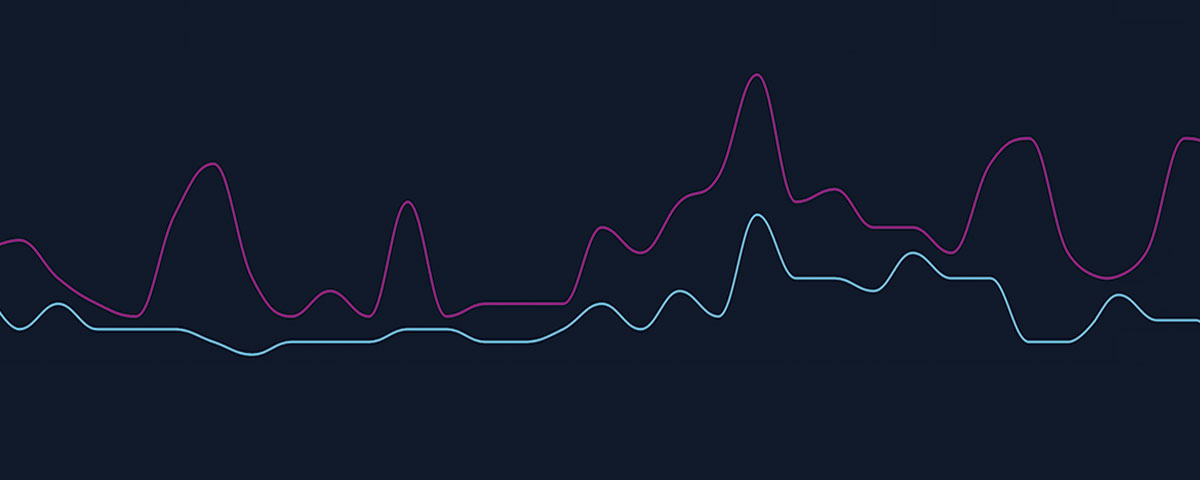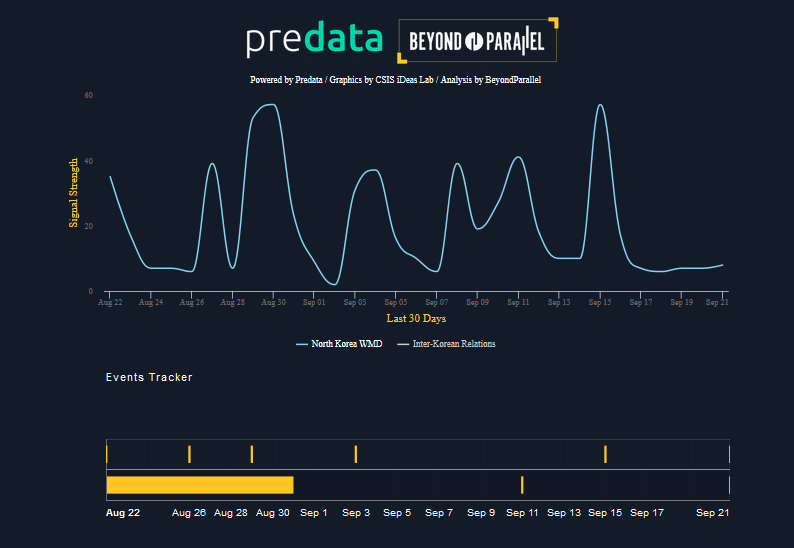
More North Korean Rocket Tests Possibly on the Horizon
It’s not likely to be a long time before North Korea conducts additional missile tests. Predata-Beyond Parallel signals indicate there is a significantly elevated chance of North Korea conducting a missile test in the next 30-days and an elevated likelihood of North Korea conducting a missile test in the next 14-days. On September 21, the underlying signals for the 14-day prediction reached its highest level in the last 119 days. The last time this signal reached this current level was on September 12, just two days before North Korea fired an intermediate-range ballistic missile which overflew Japan. The underlying signals for the 30-day prediction level have been in their 100th percentile highest level and remained at their highest level in over 365 days every day since September 15. The 30-day moving averages for both sets of signals have also been trending upward marking their highest levels in the last 89 days on September 21.
Click here for Interactive Signals.

These signal predictions are corroborated by other Beyond Parallel empirical studies of North Korean behavior and events on the Korean peninsula. At its current pace, North Korea is on a path to do more missile and nuclear tests in President Trump’s first term than it has in any previous four-year U.S. presidential term (Obama’s two terms in office saw 61 missile testing events with over 100 missiles tested and four nuclear tests conducted). North Korea’s most recent weapons tests have included:
 North Korea Tests an Intermediate-Range Ballistic Missile | September 15, 2017
North Korea Tests an Intermediate-Range Ballistic Missile | September 15, 2017
On the morning of September 15, North Korea fired an intermediate-range ballistic missile (IRBM) which overflew Japan. According to a statement by the South Korean Joint Chiefs of Staff, the missile flew approximately 3700 km from its launch site near Pyongyang’s Sunan International Airport before landing in the Pacific Ocean. The launch follows a UN Security Council resolution condemning North Korea’s September 3 nuclear test and imposing new sanctions.
 North Korea Conducts 6th Nuclear Test | September 3, 2017
North Korea Conducts 6th Nuclear Test | September 3, 2017
On September 3, North Korea conducted its 6th nuclear test in violation of numerous UN Security Council resolutions. The test resulted in an artificial earthquake measuring 6.1 mb on the magnitude scale (CTBTO) near Punggye-ri and was estimated to have an explosive yield much larger than previous tests. North Korean state media asserted the test was of a hydrogen bomb.
 North Korea Fires Ballistic Missile Over Japan | August 29, 2017
North Korea Fires Ballistic Missile Over Japan | August 29, 2017
On Tuesday morning, North Korea launched an intermediate-range ballistic missile over Japan. The missile was fired from a location near Pyongyang and flew about 2,700 kilometers before landing in the Pacific Ocean approximately 1,180 kilometers from the Japanese coast. Reports indicate it may have been a Hwasong-12.
On September 19, in his first address to the United Nations General Assembly, U.S. president Donald Trump specifically called out North Korea’s nuclear and missile programs saying “No nation on Earth has an interest in seeing [North Korea] arm itself with nuclear weapons and missiles.”
President Trump then announced “Presidential Executive Order on Imposing Additional Sanctions with Respect to North Korea” on September 21 giving increased authorization to the U.S. Secretary of the Treasury in sanctioning North Korea. The authorization of new unilateral sanctions builds upon the UN Security Council’s September 11 actions to strengthens sanctions on North Korea with an unanimous vote passing resolution 2375.
These predictions are made possible through a Predata-CSIS Beyond Parallel collaboration seeking to bring open source intelligence tools and big data analytics to issues related to the Korean peninsula. The signals are drawn from open sources across the internet which provide a rich source of information for insights and context to current events and ongoing trends. Predata’s analytics are paired with Beyond Parallel databases of historical events to analyze current trends and make predictions about future events.
